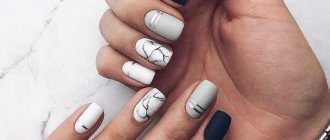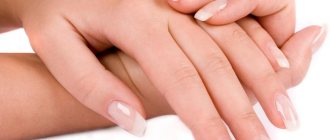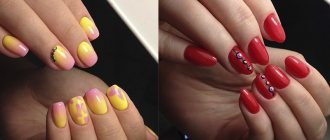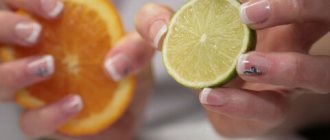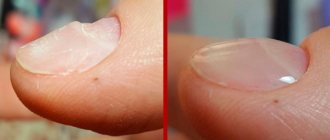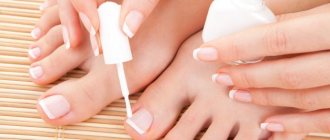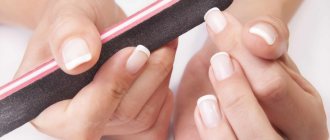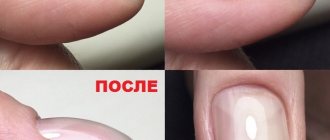Manicure has become so firmly established in our lives that it is difficult to imagine the image of a modern girl without it. But just recently it was more of a privilege available to a select few.
Long or short nails? Bright red polish or neutral nude? Find out what secrets a manicure will reveal.
Take the test
In this material, we have collected interesting and useful facts about manicure that will be of interest to anyone who wants to know how today’s cult of beautiful nails began.
Men have to cut their nails more often
And not just because they rarely grow their nails. They grow faster than women (as does hair).
Well, if we talk about general trends for the stronger and weaker sex, then both of them grow the fastest nails on their thumbs and the slowest on their little fingers.

On a note!
According to the American Academy of Dermatology, if a person loses a fingernail as a result of injury, it will take about 6 months to recover. But if the same thing happens to the toenail, it will take at least 1.5 years to grow back.
In Ancient Egypt, one could determine a person's class by manicure.

Ancient Egypt is famous for the fact that it was there that many body care procedures were invented. Until now, their recipes are used by modern makeup artists, massage therapists and other beauty industry professionals.
In ancient times, it was possible to determine a person's class by fingernails . Along with their lips, Assyrian soldiers painted them before fighting. This was a mandatory procedure before the battle.
Also, the color of the nails could tell a lot. For example, only high-ranking classes wore dark manicure. In Ancient Egypt, there was even a special position called “keeper of the pharaoh’s nails.”
WHAT DID YOU NOT KNOW ABOUT MANICURE POLISH?
- The invention that pushed the beauty industry, which was just emerging at the beginning of the 20th century, to create nail polishes was car paint.
- The first colored varnish, closest in release form and composition to modern ones, was red. It appeared in the early 1930s.
- The polish had a waterproof formula that allowed the product to stay on the nails for about three days. By the way, before this, the durability of colored manicure was even less: the coating was only enough for one day, and it was washed off with water - it was enough to hold your hands under the tap or put them in the bath.
- As for the safety of varnishes, even today not all of them are perfect. To be 100% sure that your nail polish will not harm your nails, look for bottles marked 5-free: this indicates that the composition does not contain toluene, phthalates, camphor, formaldehyde or formaldehyde resin.
A primitive manicure set was discovered on the territory of Ancient Babylon

People began to take care of the skin of their hands and nails a very long time ago. Manicure appeared long before other care procedures, because healthy nails and hands spoke of the good condition of the whole body.
The first manicure set was discovered on the territory of Ancient Babylon . There is no doubt that it belonged to that period of time. This is evidenced by the material of the instruments. The oldest manicure apparatus dates back to 3200 BC.
INCREDIBLE FACTS ABOUT GEL POLISH
- The formula of durable coatings is such that they do not dry out, but harden under the influence of UV rays in a special lamp. This process is known in professional circles as polymerization.
- Many masters talk about the need to take a break after using gel polishes for a long time so that the nails can “breathe.” In fact, nails are layers of keratinized cells in which metabolic processes do not occur. And “rest” from gel polish will not help them. To make them grow healthier, it is enough to use oil that nourishes the nail matrix - it is hidden under the cuticle at the base of the nail plate.
- If you follow all the technical details when creating a manicure with gel polish, the coating will not only not harm your nails, but will also make them stronger, as it will protect them from external influences.
How does a fingernail and toenail work: description and diagram

On one side it goes into the root of the nail fissure, and on the other it ends with a free edge. The back and sides are limited by the nail folds (skin folds), and the place where they connect with the nail is called the nail sinuses. The rollers at the base are connected to the nail plate using the cuticle, which protects against infection. Nail growth is produced from the matrix. It turns into a round white spot - the lunula, and then into the nail bed. The following is a description of each part and a diagram.
Eponychium (cuticle)
The eponychium or cuticle protects the matrix and nail bed from dirt and infection . It is an overgrown continuation of the nail fold and consists of dead cells. In case of strong regrowth, it may crack, causing burrs to form. There is a risk that bacteria can enter living tissue through such cracks and inflammation can begin. It is very important to process the cuticle in a timely manner: push back, trim or remove with a manicure device.
Pterygium
Pterygium is a thin film adjacent to the nail and is the bottom layer of the cuticle. Performs a similar function of protecting against the penetration of bacteria, grows along with the nail and is almost invisible. During a manicure session, it is removed along with the cuticle.
Transverse groove

- problems with the gastrointestinal tract when enzyme synthesis is disrupted;
- poor blood filtration due to kidney disease;
- diseases of the cardiovascular system;
- disorders of the musculoskeletal system, if the furrows are accompanied by the appearance of small tubercles;
- fungal infection if there is itching and flaking of the skin.
Matrix
The matrix or root of the nail is the area of its formation. What shape and thickness the nail will be, as well as its density and growth, depend on the matrix. Its cells contain blood vessels and nerve endings.
Each person's nail root has an individual shape, it depends on genetics. If the nails are thin, the matrix will be short. This cannot be changed, but you can strengthen it artificially using gel, varnish or acrylic.
If it begins to become thinner over time due to illness or injury, then you need to find a possible cause and begin to restore it.
Bed

The nail plate is located on the nail bed and it is responsible for providing useful microelements for growth and health. When performing a manicure, it is important to avoid pressing on the tissue under the free edge of the nail when removing dirt. Otherwise, there is a risk of it detaching from the nail bed. The supply of nutrients will stop, and the nail will begin to thin out.
Lunula
This is the light part at the base. If it is damaged, the nail will begin to deform, which can lead to irreversible consequences. It is important to be careful when processing nails before and during extensions .
How the nail plate works: description and diagram
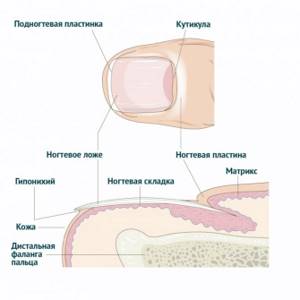
Due to this property, medicinal varnish and cream penetrate faster, and tissue healing is accelerated. The thickness of the nail plate, like hair, is influenced by genetics. It is impossible to fix it.
If strong nails become brittle, then you need to look for the cause. Most likely, this indicates the presence of a disease in the body. The following is a description and a diagram.
Hyponychia
This is a small growth of skin under the free edge. Thanks to it, the free edge of the nail, when damaged, does not pull the entire nail plate with it. It also serves as an obstacle to the penetration of foreign objects and moisture under the nail.
If you cut your nails short, it is almost invisible. But for those who regularly resort to extensions, the hyponychium increases . The longer the nail grows, the greater the load on it, and the hyponychium tries to protect the nail plate from fracture. By growing to the nail, it reduces the risk of damage.
Roller
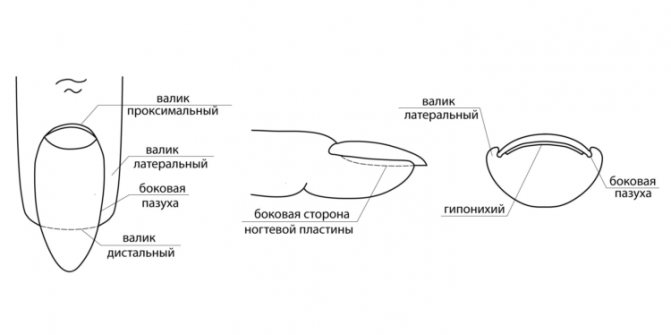
This is a fold of skin located on the sides and back of the nail that merges into the cuticle. In the absence of proper care, contact with aggressive detergents and a lack of vitamins, the nail folds become dry, thin, and burrs form. Damage to skin folds can lead to inflammatory processes such as paronychia or onychotillomania. In extreme cases, the nail can be lost.
Free edge
It is not connected to the nail bed and is the protrusion of part of the nail above the base of the finger or toe. Quite vulnerable to possible damage. Its length and shape depend on the person’s personal preferences.
Sinuses
Nail sinuses or sinuses are a depression in the area of the transition of the nail fold to the plate . The cuticle protects the sinuses from the penetration of bacteria, but sometimes this is not enough.
During a manicure, the sinuses are treated and pterygium and other deposits are removed. This treatment has a positive effect on the condition of the nail as a whole, and varnish, gel and acrylic do not peel off after application.
Interesting facts about nails and their care
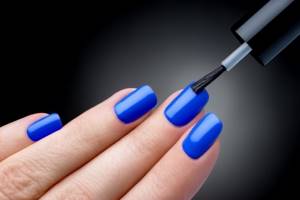
Nails are an interesting part of the human body. It is necessary to start with the fact that the plates begin to develop in the womb - in the third month of pregnancy. Like hair, it is made of keratin, a special type of protein. During prenatal development, nail growth is accelerated. And in general, children’s nail plates grow faster than adults’.
There are other interesting facts about nails:
- A variety of factors can slow down the growth of nail plates - taking certain medications, stress, metabolic disorders, strict diets, etc.
- In winter and autumn, nails grow more slowly compared to the summer and spring months.
- The fastest nails “lengthen” are those on the right hand for right-handers and those on the left hand for left-handers. Moreover, the plates on the thumb and little finger grow slowest. And faster - on the middle finger.
- In order for the nail plates to grow strong and healthy, it is better to apply oils and other products to them before going to bed. It is at night that a person’s nails grow faster.
- The average rate of nail growth is about 1 mm per week. To speed up the process, you can resort to not only using oils. But also playing the piano, often working at the computer - beating the keys serves as a kind of massage.
- The most popular type of manicure is French. It was not invented in France, but in Hollywood. Jeff Pink has come up with a nail design that will suit a variety of outfits. So the French manicure became a universal manicure technique.
What types of gel polish are there?
Everything is simple here: gel polish can be soft and hard. And their main difference is in the level of porosity and methods of removal. So, soft polish on the nail plate is not fixed as firmly as hard polish, so removal is easier - all you need is to soak your nails in a special liquid for a few minutes. If everything is done correctly, the damage to the nail will be minimal. At the same time, it is highly not recommended to remove such gel polish on your own (many of us are guilty of this when they see that it begins to come off). You can do a lot of damage this way.
Hard gel polish is not as porous and lasts longer on the nails. However, it cannot be removed without a special device. Thus, applying hard gel polish is very similar to acrylic nails. It visually lengthens nails and lasts up to 4 weeks.
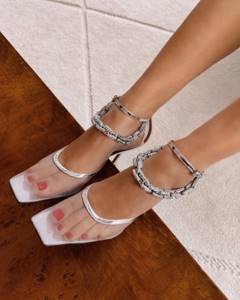
Why do you need gel polish?
First of all, this type of coverage is a real salvation for many of us. It dries in a matter of seconds, chips (in the worst case scenario) appear only towards the end of the service, the plate itself is polished. Let’s not even talk about the appearance, shine and volumetric appearance of the surface. True, many people believe that gel polish is harmful to nails, however, if you properly and regularly take care of your hands and remove the coating correctly, then nothing bad will happen.
Gel polish colors
The palettes offered by gel polish manufacturers are nothing short of amazing. Thanks to this variety, you can move away from monochrome coatings and make almost any design, including the most complex (since the layers will definitely not mix with each other and will not spread).

Sources
- https://blog-stilista.com/30-faktov-o-nogtyax.html
- https://MedAboutMe.ru/obraz-zhizni/publikacii/stati/nogti/13_faktov_o_nogtyakh_kotorye_vy_ne_znali/
- https://sarafann.ru/bp/interesnye-fakty-o-manikyure-201
- https://MedAboutMe.ru/obraz-zhizni/publikacii/stati/manikyur/chto_nuzhno_znat_o_manikyure_interesnye_fakty/
- https://GraziaMagazine.ru/beauty/vsya-pravda-o-gel-lakah-fakty-kotorye-nuzhno-znat-lyubitelnicam-salonnogo-manikyura/
[collapse]
History of manicure
Nails have been cared for thousands of years ago. It is known that the most ancient manicure set was discovered by archaeologists in the territory of Ancient Babylon (modern territory of Iraq). True, there was hardly an orange stick and a buff.
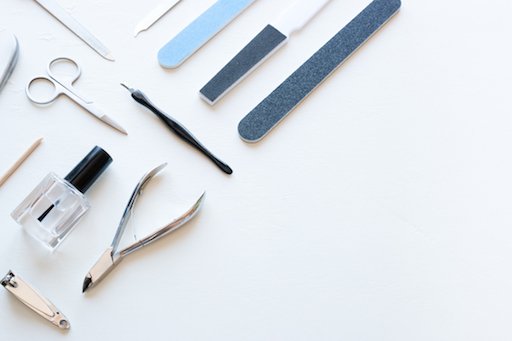
©Getty
In Ancient Egypt, the length and color of nails indicated a person’s class affiliation - for example, representatives of the nobility had bright manicures.
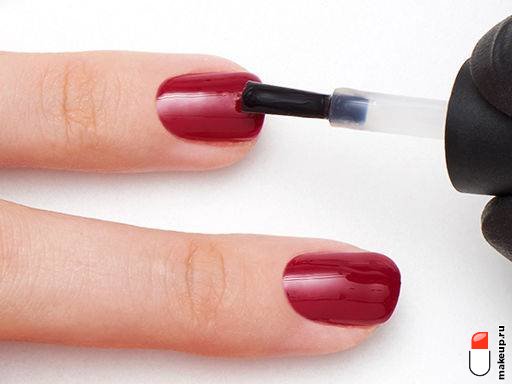
© Makeup.ru
Queen Cleopatra used henna to decorate her nails and hands, and used oils for care.

©Getty
In Ancient Greece and Rome there was a special category of slaves - cosmetics. They helped people of noble birth take care of themselves. This included polishing the nails using a special composition containing animal fat.
The prototype of modern nail polishes appeared in ancient Chinese civilization. It was a paint made from crushed minerals, wax, egg yolks and gum arabic. There is also information that gold dust was used to decorate nails.
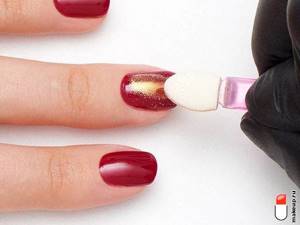
© Makeup.ru
In Ancient China, people tried to grow their nails. And not in the modern sense, but up to 25 cm (where is modern extension)! This was considered a sure way to protect yourself from evil forces. Those who were unable to achieve the “reference” length (because their nails simply broke) put pointed metal tips on their fingers.
In the Middle Ages, manicure, on the contrary, was associated with evil spirits. It got to the point that the Inquisition declared this procedure sinful. But after some time, everything changed - and well-groomed nails again became one of the essential attributes of the appearance of noble people.
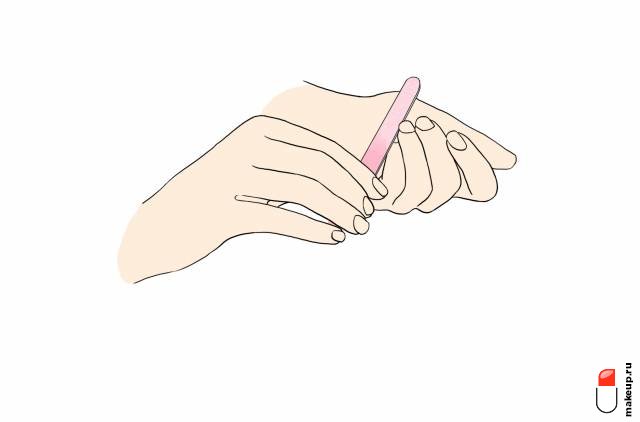
© Makeup.ru
It is interesting, for example, that during the Renaissance it was customary at court to grow a nail on one of the little fingers - in order to politely knock on the door with it before entering. Polishing nails with a special block covered with suede was common - it can be considered the prototype of a modern buff.
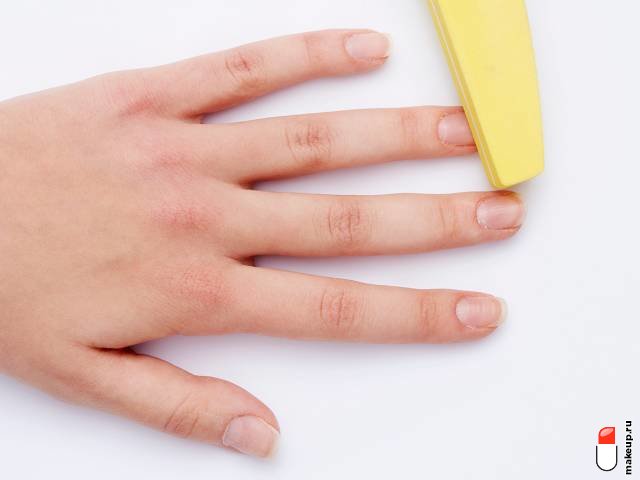
© Makeup.ru
And in 1830, the first full-fledged manicure set appeared - it was created by the doctor of the French king Louis-Philippe. After the monarch's finger became inflamed due to a carelessly torn off hangnail, he was supposed to properly care for his nails and the skin around him.
Return to contents
We recommend reading:
- Manicure in beige tones 2022
- Red French: the brightest manicure trend in 2022
- New ideas for manicure
Cleopatra cared for her hands with oils and decorated her nails with henna

Cleopatra is considered not only the most beautiful woman in Egypt, but throughout the world. She definitely knew a lot about taking care of her appearance. Priests created special nail paints and caring oils. For a very long time the composition of these substances was kept secret.
Cleopatra decided to make public all her skin care recipes and publish a large collection. This book has survived to this day. She used many of the recipes herself and they have survived to this day. The rubs made from it contained animal and vegetable fat, herbal extracts, and mineral components.
The surface of the palms, feet and nails was decorated with designs made with henna. Nails were sometimes soaked in clay to give them a vibrant color . High classes wore nails in red, brown and even green. Servants had their nails painted in pale shades.
When and why a manicure or pedicure can harm your nail health

In some situations, manicure and pedicure can cause problems. These include:
Allergy to cosmetics, varnishes, gel polishes, extension complexes
If, after a manicure, there is burning, redness, or blistering in the area where the polish was applied, this may indicate an allergy. Contact your specialist as quickly as possible to remove the coating, take antihistamines and consult a doctor. An allergy test or exclusion method will help remove the allergen and continue to enjoy the beautiful coating.
Poorly executed hardware manicure
Failure to comply with a number of requirements when working with the device can result in cuts, cuticle rupture, cutting of the skin down to the sensitive layer and, as a result, painful conditions. Always tell your nail technician if you have closely spaced blood vessels, sensitive skin, thin cuticles, or simply experience pain during manicure. Hardware manicure is painless.
Failure to comply with standards for disinfection and sterilization of manicure instruments
Pay attention or directly ask the specialist how instruments are sterilized in the salon or at home, if the procedure is at home. Require the use of disposable files and buffs. You can bring your own. Before the procedure, the master must apply antiseptic to himself and your hands.
Failure to comply with the deadlines for correction of extended nails

Have you been wearing extended nails for more than 4 weeks? In vain! It's time to adjust the shape to avoid tears and detachments. The recommended intensity of correction is once every 3-4 weeks. The master will correct the architecture of the plate and apply a new layer of material in the stress zones of the fold on the sides of the cuticle. Learn more about how to correct and restore the appearance of nails for different types.
Professionalism of the master
Contact only a trusted, recommended specialist or salon so as not to regret a poorly done manicure or even microtraumas and infections. Nails require the same careful and careful handling in compliance with all hygiene standards as the entire body. The stingy pays twice, do not skimp on the quality of mandatory procedures.
Foot skin problems and what a pedicurist should do if they exist
How do you take care of the health of your nails, what procedures do you consider mandatory in your care?
Comment
Jeff Pink invented French
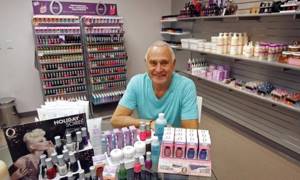
About 40 years ago, a director he knew approached Jeff Pink with complaints that he had to spend a lot of time caring for actresses’ nails so that their hands would always look well-groomed on screen.
Jeff Pink managed to solve his problem, and he created French . This manicure was a revolutionary discovery. French models were especially happy with this innovation.
In the modern world, in beauty salons, you will be offered more than 10 jacket options. The technique for creating such a manicure is very complex. You need to put a lot of effort and be careful so that each strip is even. For these purposes, beginners often use stencils.
1 0
In the 1920-30s, moon manicure was especially popular
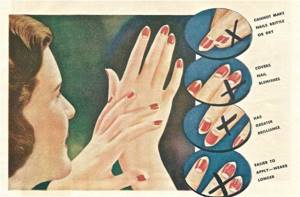
Lunar manicure appeared only thanks to the creation of new paint for cars in America. The famous makeup artist was inspired by the new possibilities of the automobile industry and came up with color painting for nail plates.
To make a moon manicure, you need to apply polish only to the middle of the nail, leaving its hole and tip untouched. In the 1930s, this type of manicure also remained popular, but now the nail plate is painted over almost completely, with the exception of only the nail hole .
Modern masters still offer a similar service to their clients. These nails look unusual and have their own history. Of course, modern lunar manicure differs in quality from its predecessor.
Initially, white varnish was used to cover the nails on the inside.

This method was invented to emphasize the naturalness and neatness of the nails. Not everyone likes bright colors, but everyone understands that nails should look well-groomed.
White varnish was originally used to cover the inside of the nails . When they grew to the required length, the part lagging behind the finger was covered with white. So the nails seemed natural and not tacky. Nowadays a special white pencil is used for these purposes.
